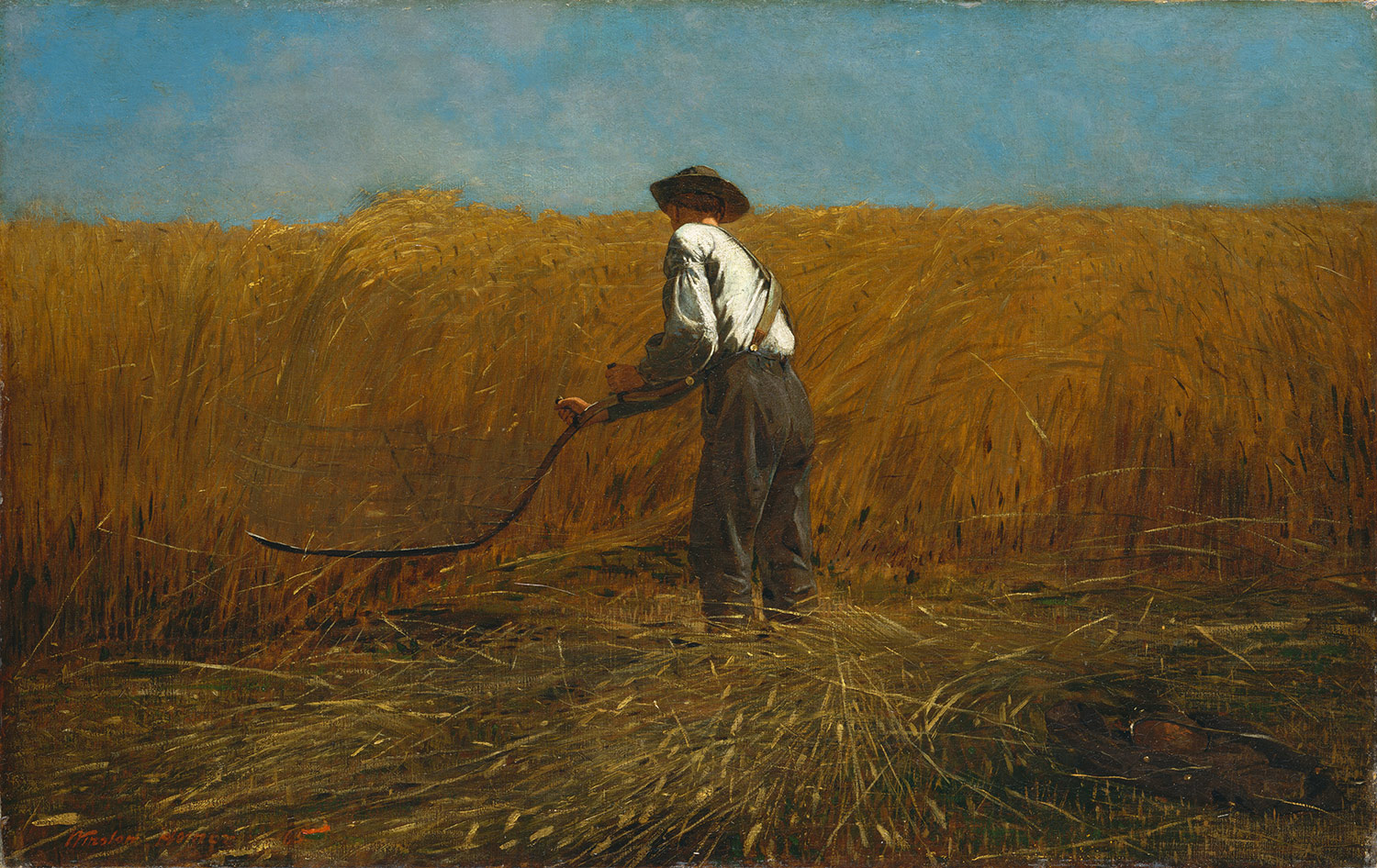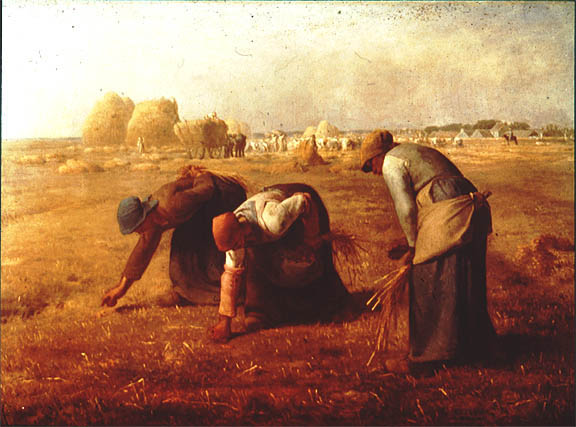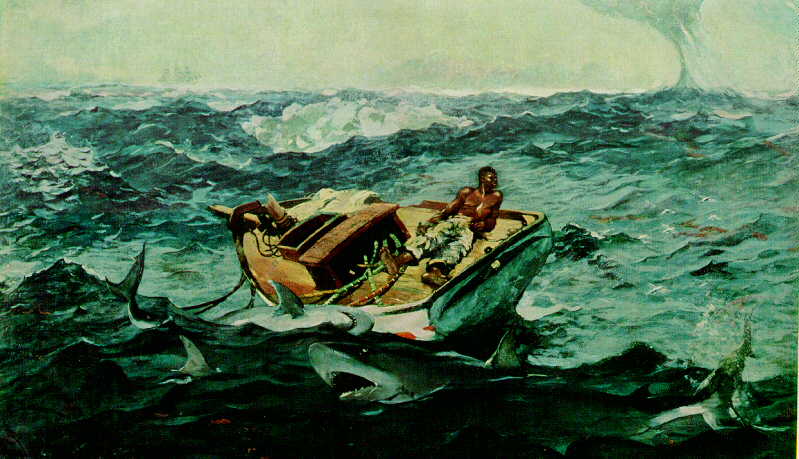

Posted on 05/25/2005 6:27:04 AM PDT by Republicanprofessor
Well, now that exams are over, grades are in, I’d like to bring some Art Appreciation ideas to Free Republic. Unfortunately, as artists have become more and more abstract, it really does take some study and/or education to understand what their ideas are. One doesn’t always need a snotty PhD art historian to do so, however. Once a person learns how to look at artworks, one can make one’s own decisions about form and content. (One can't just "appreciate" the blue in a painting to really understand what the painting is about.)
Form and content: that’s what I emphasize in all my classes. What is the artist trying to say and what forms (colors, lines, shapes, etc.) does he use to convey that message? Another fun thing about abstraction is that different people can have different interpretations, that the pieces can work on different levels. I’m hoping we can have some fun discussions here on FR about these works. (I didn’t “get” all this stuff right away; I’ve been studying it for decades.)
So, here goes.
The camera was invented in 1839. While I am not going to deal with the history of photography, what’s important is that at this point artists are freed to go beyond realism. The camera can take normal portraits and all kinds of realistic images. The artists can begin to explore abstraction.
In the late nineteenth century, Maurice Denis said this “A picture--before it is a a war horse, a female nude, or some anecdote, is essentially a flat surface covered with colors in a particular order.” Thus the artist is now free to do what he wants on the painting. Whistler won a court battle for this at the end of the nineteenth century.
So let’s begin with Eduoard Manet (1832-1883) Here is his Olympia 1863 in contrast to the older (more realistic) image of Titian’s Venus of Urbino from the early sixteenth century.


Can you see the differences between these? What has Manet done to update Titian? He’s made the lady flatter and bolder; she is definitely a prostitute, and a rather successful one at that (judging by the flowers from an admirer).
Manet is a part of the movement called Realism from about 1860-75 or so. This includes Courbet, but I’m going to spare you his more socialist works. This does not mean that the works look “realistic,” but that they are exploring a new, more modern and flattened style of realism. What is real in this world? That question is discussed in this famous work by Manet, Dejeuner sur l’Herbe (Luncheon on the Grass) which is another reworking of another Venetian Renaissance work, this time by Giorgione Pastoral Symphony.


Manet Dejeuner and Giorgione's Pastoral Symphony
Notice that, in the earlier painting, these ladies are not prostitutes. Notice also, in Giorgione’s work on the right, that those men are not even paying attention to these ladies. That’s because the women are muses. The large, golden size is inspiring to the men as they compose music; one woman dips into the well of inspiration, while the other plays a flute-like instrument. This is also one of the first luscious landscapes, with a beautiful golden sky typical of artists from Venice.
Manet’s work has often bothered me. Why the larger, dressed woman who is bathing in the background? She actually completes a compositional triangle that has been seen frequently in art history. The other woman is blatantly looking at you, and is not looking slyly to the side as in Giorgione’s nudes. She is also not dressed, in contrast to the dressed woman who is bathing. And again the men are not looking at her. Why? One idea that I subscribe to is that the men (who are artists themselves) are discussing how to portray a nude. And one says he would paint her flatly, as if in real light, and not with the veiled allusions of the past. He would paint her directly and “realistically,” and voila, there she is. Manet is also saying that he can do whatever he wants in a painting. That means he can play with our heads, just like he does here and at the Bar at the Folies-Bergere.
Now I want to end by looking at Winslow Homer (1836-1910) our great American painter from the end of the nineteenth century and a contemporary of Manet. Manet has a tremendous world-wide reputation, but Homer is seen more regionally. But what do you think? Who is better?


Homer’s The Gale and Fog Warning
Perhaps Homer just appeals to me because I’m a New Englander, and I love the ocean and think he captures that life and death struggle of the ocean very well. I also like the way the “stories” of his paintings are open-ended. Will her husband return from the sea? Will the fisherman make it back to his boat?
These works will always move me more than Manet. And both men have a wonderful way with the brush. Things look nicely detailed from a distance, but up close you see just a sweep of a brush here and there. That brushwork, what we call painterly, is even more important in Impressionism and thereafter.
Sheesh - I feel so ignorant. I never made the connection to Reconstruction in that painting. It certainly makes sense!
Keep these threads coming - I see I have a lot to learn!
mark and bump
 Another highly symbolic Homer: Veteran at Work in a New Field. Painted in 1865, just after the end of the Civil War.
Another highly symbolic Homer: Veteran at Work in a New Field. Painted in 1865, just after the end of the Civil War.
He always has much more going on than a quick viewer might suspect. I never really liked this image much until I read more about it.
Thanks for posting it. I had hoped that people would rise to the occasion and post more images than I had initially. This worked out even better than I had thought it would.
Thank you so much for sharing that pic and great analysis. It's the first time I've seen. It is really good.
Don't forget to add me to your ping list as well. This is one of the best threads ever on FR.
The Gulf Stream is one I can't wait to share with my fourth graders in September. They will simply love it and eagerly write stories about it, Another generation of Homer lovers.
Sorry for the many posts this morning but when I went to Art.com in order to purchase a print, they showed "The Gulf Stream" as something else. Could you double check the title of the one you have of the man adrift?
Glad you liked it. It's one of my favorite exam slides.
http://images.google.com/images?q=Homer+the+Gulf+Stream&hl=en&btnG=Search+Images
If the google search doesn't replicate here, what I do for images is go to Google Images and hit Homer Gulf Stream (or whatever). It's quicker than pulling slides!
Have you been to the new MOMA in New York? I'm curious to know what you think of it.
Quite a message of hope for a war-torn Nation.

For comparison of a contemporary European work: Millet "The Gleaners", 1857. For some reason, I always saw a parallel and contrast between the two works.
Millet's painting corresponds with the rise of the recognition of the proletariat and classism (Marx's manifesto was 1848-9) with peasants picking for grains in the stubble of the horseman's field, as opposed to Homer's individualist American, profiting from his own labors.
In case I haven't been, please add me to the pings

in its composition and technique shows that we can feel truly reposeful and energetic at once. It has in it a man on a boat whose mast has been broken and swept away by a hurricane, adrift in the restless sea, and surrounded by sharks. I once thought it justified my feeling that the world was cruel and battered one about.
I learned this was not what this painting is about, or why I liked it. Homer's The Gulf Stream met my deepest hope — to like the world honestly — because it puts opposites together in a way that shows the world makes sense.
The tumultuous sea and whitecaps, the sharks, broken boat and waterspout in the distance on the right — all have motion and turbulence. Yet the man seems strangely at ease as he rests on his elbow, looking out. Homer’s composition shows that both man and world are a relation of "repose and energy, calmness and intensity, serenity and stir." --Daniel Reiss
I have a great friend who does amazing work. Please check out his site & let me know what you think. His work is incredible up close. I have 2 of his paintings and one sketch.
http://stevecepello.com/thumbnails.html
I love that painting!
When I look at those paintings... I get a very strong inclination to go running. And that's exactly what I'll do right this minute. You should advertise your lecture series as a weight loss aid.
No, I haven't been there yet. We don't get to NYC much. When I went to see the Gates, with 3 children in tow, it was too much to see the MOMA too (although that was what I wanted!).
Maybe in October; I should be in the city for a conference then.
Not to mention how much more GRAIN there is in Homer's works. Does this already show that socialism doesn't work?
Great pairing. I've never done that; I think I will the next time for sure. (Then maybe I can touch upon politics too. My students are quite liberal.)
Disclaimer: Opinions posted on Free Republic are those of the individual posters and do not necessarily represent the opinion of Free Republic or its management. All materials posted herein are protected by copyright law and the exemption for fair use of copyrighted works.